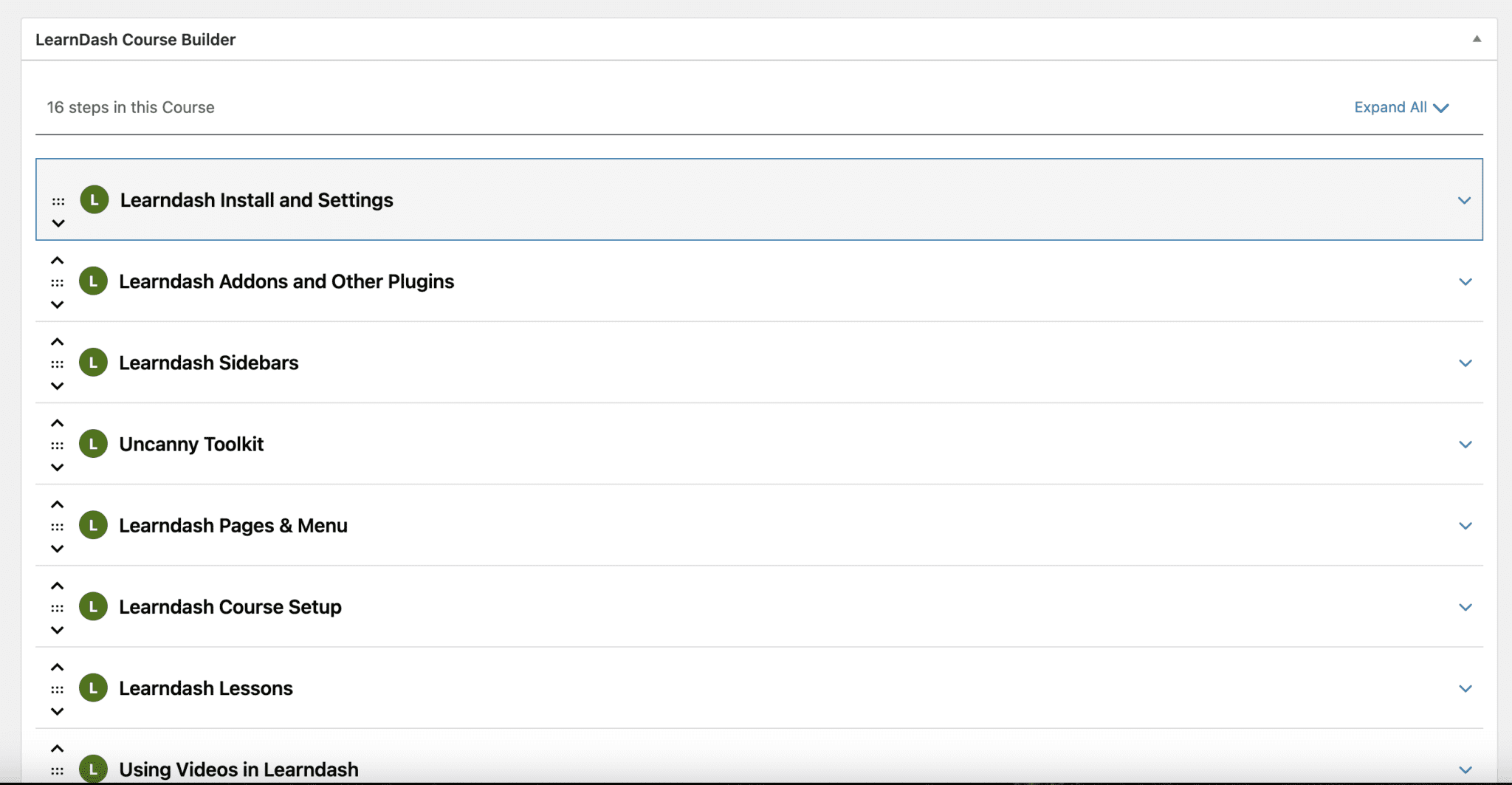As mentioned in previous blogs if you create online courses on your website it can improve your SEO. Additionally, it can be a lot easier to set up than you think (as you don’t need to learn yet another system). Likewise, can be much easier for your clients/students to remain in one place and can be far more budget friendly.
And if you have a WordPress website it’s quite simple to do.

So how do you create online courses with WordPress?
There are quite a few options actually. WordPress doesn’t have a built in feature to create online courses as it’s just open source software, so every bit of functionality is added through plugins.
And, there are quite a few online course plugins for WordPress (often called LMS plugins), such as Lifter LMS, Memberspress (which has memebrships sites and it’s newer online course function) and Learndash.
There are loads of others but I find these to be the most popular ones.
With Learndash being my favourite.
Why?
I find it is the simplest, with the most features.
It’s that easy!
With any of these plugins once installed they require a bit of setting up. Then, of course, it’s just setting up the courses. I find Memberpress courses a bit more of a faff to set up, regarding protection, beacuse each course page needs rules.
With Learndash, once set up, its simple to create online courses. You begin with adding your lesson and topic titles, then creating the content on those, the same way that you would for all the other pages on your website. Protection to all those pages are automatic on registration to the course.
You can use the inbuilt payment system or an alternative ecommerce system such as Woocommerce or Studiocart.
There are also extra features. These include quizzes and assignements to test your students knowledge, gamification, to encourage students to learn like leaderboards, and the ability to track their progress, as well as certificates you can create for their course completion.
These are all easy to set up too and add extra interaction for your students.
Similarly, you can also use various medias to teach your content. For example, video, text, audio and downloadable PDFs.
As I mentioned, when you create online courses with WordPress, it also helps push you up the rankings in the search engines, as when students are logging in and spending time on your site, the search engines can see an increase in traffic, as well as time spent on your website.
For this reason I always try and keep as much as I can on my website. This includes online courses and purchases etc. This is perfect for keeping visitors on my website for as long as possible, and they experience the whole flow without having to leave.
(This is an affiliate link)
If you would like to know more about how to create online courses with WordPress and Learndash then I have the perfect solution for you!
My Learndash course teaches you how to do everything from installing the plugin and setting it up to creating your courses, lessons and topics, using video and adding extra features.
You can find out more by clicking the lovely blue button below:
Online Course Content: 5 Simple Steps on How To Create One
So it's all well and good having an idea for a course and choosing a platform that suits you but how do you create online course content? This is an area many course creators find really difficult. They have a general idea, but then worry they are not going to have...
Online course platforms: Which are the best to use?
Introduction: Online Course Platforms There are so many options out there for creating online courses it's often overwhelming and confusing to figure out which online course platforms are the best. They range from low cost or a one off fee to hundreds of pounds a...
Online Course Vs Membership: How to Differentiate Between them
Introduction: Online course Vs Membership A lot of people get confused about the differences between an online course Vs membership. The biggest reason is the pricing factor. People view an online course as a one off payment, and a membership as a recurring payment....





